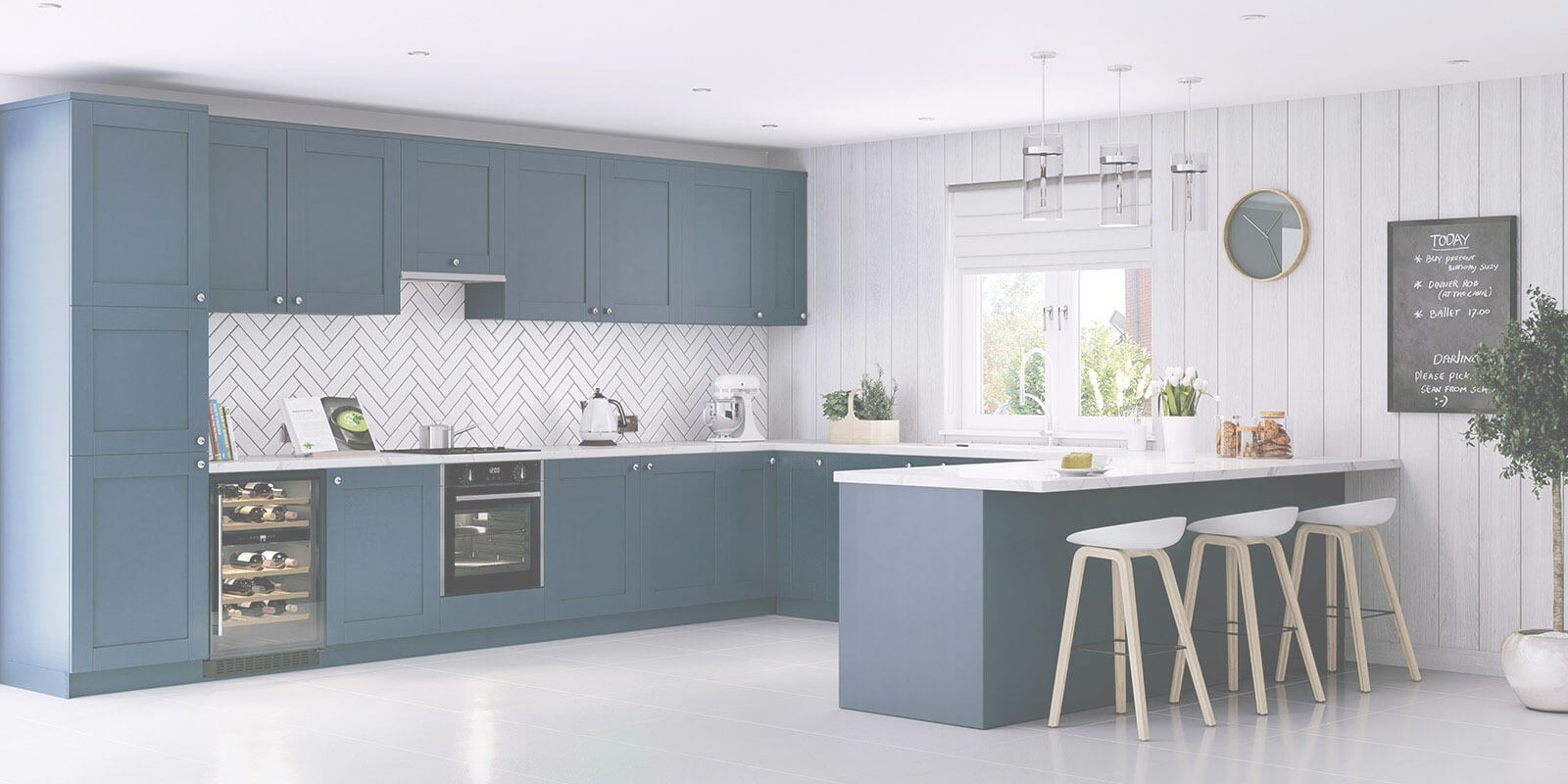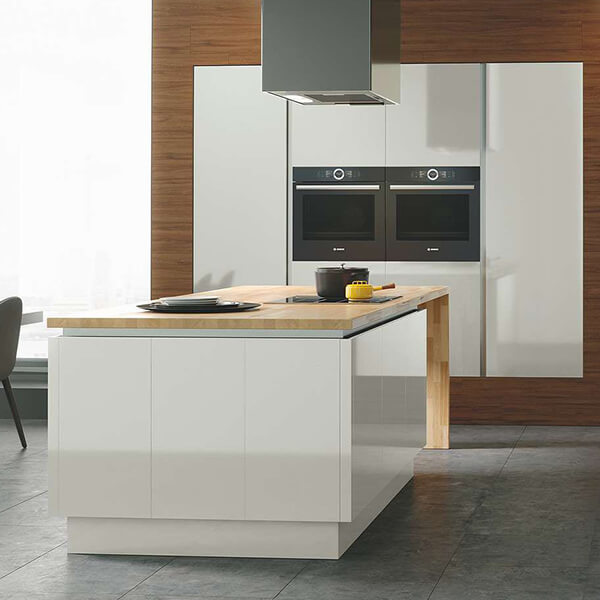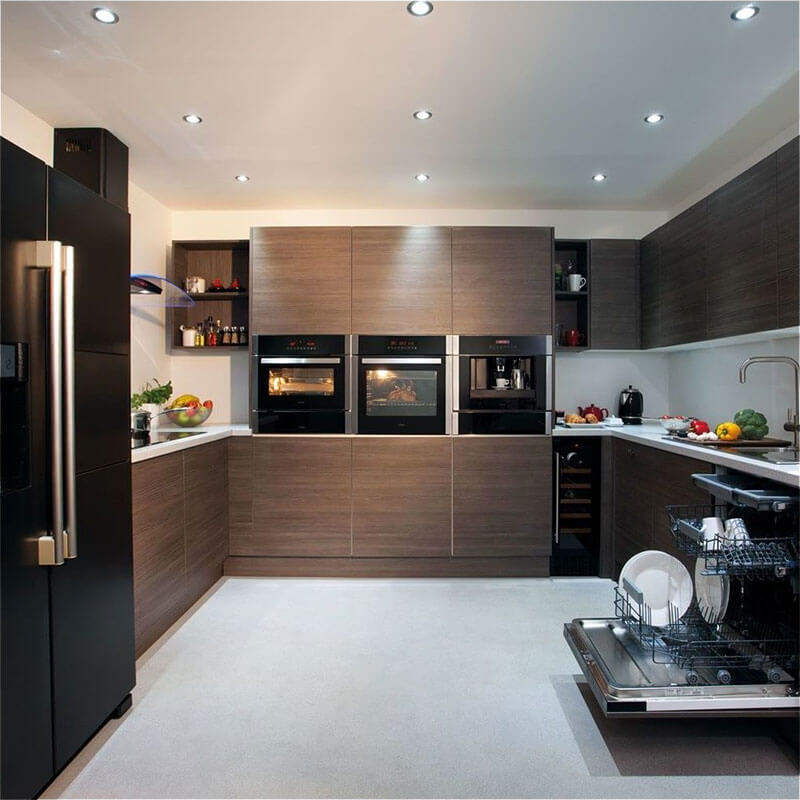Kitchen Appliances: Freestanding vs Built-In?

Struggling to choose between freestanding and built-in kitchen appliances? This comprehensive guide from Better Kitchens Ltd aims to help you understand the pros and cons of each option, offering expert advice on how best to equip your kitchen.
Understanding the Fundamental Differences: Freestanding vs Built-In Appliances
When you're planning your kitchen, one of the critical decisions you'll face is whether to go for freestanding or built-in appliances. Although both have their merits, they offer distinct experiences that can significantly influence the overall look and functionality of your kitchen.
Here, we delve deeper into what sets these two types apart.
Design Philosophy
Freestanding Appliances
Freestanding appliances are designed to stand alone, making them more versatile and easier to integrate into various kitchen layouts. They are often considered the more traditional choice and are a common feature in many households.
Built-In Appliances
Built-in appliances, on the other hand, are all about creating a unified, cohesive look. They are designed to fit flush with your cabinetry, giving the kitchen a sleek and customised appearance.
Installation and Flexibility
Freestanding Appliances
Freestanding units are relatively straightforward to install. You usually just need to position them in the allocated space and make the necessary electrical or gas connections. The ability to move them easily is a boon, especially if you decide to remodel or relocate.
Built-In Appliances
The installation of built-in appliances is more complicated. It often requires skilled professionals to ensure that the unit fits perfectly within the allocated cabinetry and adheres to electrical and plumbing codes. Once installed, they are generally fixed in place, limiting your flexibility in rearranging them in the future.
Space Utilisation
Freestanding Appliances
While freestanding appliances are generally bulkier and take up more floor space, they can be more generous in terms of internal capacity. This makes them a solid option for larger households or those who need ample storage.
Built-In Appliances
Built-in units are fantastic for optimising floor space, particularly beneficial in smaller kitchens. However, they can sometimes offer less internal capacity due to the constraints of fitting within cabinetry.
Maintenance and Repairs
Freestanding Appliances
Should an issue arise, freestanding appliances are typically easier (and often cheaper) to repair or replace. In many cases, you can even handle minor problems yourself, reducing the need for professional intervention.
Built-In Appliances
Built-in units usually require professional servicing for even minor issues due to their integrated nature. This could mean higher maintenance costs over the appliance's lifespan.
By understanding these fundamental differences, you can make a more informed decision about which appliance type will best meet your needs, both aesthetically and functionally.
Whether you opt for the custom, integrated experience of built-in appliances or the flexible, cost-effective advantages of freestanding units, each has its own set of benefits to consider.
The Pros and Cons Overview
This quick-reference table provides an at-a-glance comparison of the key features of freestanding and built-in appliances. Ticks (✅) indicate advantages, while crosses (❌) point out the drawbacks. Use this table alongside our in-depth analysis to make an informed choice that suits your kitchen's needs and style.
| Feature | Freestanding Appliances | Built-In Appliances |
|---|---|---|
| Affordability | ✅ | ❌ |
| Versatility | ✅ | ❌ |
| Placement Flexibility | ✅ | ✅ |
| Portability | ✅ | ❌ |
| Aesthetic Appeal | ✅ | ✅ |
| Long-term Cost | ✅ | ❌ |
| Ease of Installation | ✅ | ❌ |
| Space Optimisation | ❌ | ✅ |
| Ease of Cleaning | ❌ | ✅ |
| Design Consistency | ❌ | ✅ |
While the table above offers a concise snapshot of the benefits and limitations of freestanding and built-in appliances, we understand that you might be looking for more nuanced insights.
Let's delve deeper into the specific pros and cons of each option, helping you make an informed and well-rounded decision for your dream kitchen.

The Pros of Freestanding Appliances
Affordability
One of the primary benefits of opting for freestanding appliances is their cost-effectiveness. Without the need for custom cabinetry or specific installation procedures, freestanding units typically come with a smaller price tag.
Versatility
From product types to brands and styles, the choices are nearly limitless when it comes to freestanding appliances. Whether you're partial to a retro look or prefer a modern touch, there's something for everyone.
Placement Flexibility
Freedom is your friend with freestanding appliances. These units can be easily placed anywhere you have the space, making them highly adaptable to various kitchen layouts.
Easy to Relocate
Whether you're moving homes or simply wish to rearrange your kitchen, freestanding appliances offer the convenience of portability. A change in setting doesn't mean parting ways with your trusted appliances.
Personalisation
Freestanding appliances allow you to express your unique style more openly. Whether you want to show off that vintage fridge or flaunt a high-tech oven, these units serve as kitchen showpieces.
Highlighting Specific Products
Certain appliances are just meant to be seen. A freestanding range or a statement fridge can serve as a focal point, elevating the overall design of your kitchen.
Budget and Aesthetics
Freestanding appliances offer a fantastic middle-ground for those who wish to blend affordability with aesthetics. You can select quality products without compromising your style preferences.
The Cons of Freestanding Appliances
Lack of Seamless Integration
One downside to freestanding appliances is that they may not provide a flush fit against your kitchen cabinets, resulting in a less seamless look.
Potential for Accumulating Grime
Over time, freestanding appliances can look a little grubby, especially in those hard-to-reach areas between the appliance and the cabinetry. This requires more regular cleaning to maintain their appearance.
Inconsistent Aesthetics
Given their standalone nature, freestanding appliances may not always match each other or the existing kitchen décor, potentially leading to inconsistent aesthetics in your kitchen layout.

The Pros of Built-In Appliances
Customised, Seamless Look
Built-in appliances offer an unmatched level of integration with your kitchen's design. They fit perfectly within custom cabinets, creating a sleek and seamless appearance.
Modern Aesthetics
With a visually quiet profile, built-in appliances are a favourite for achieving a modern, minimalistic look.
Space-Saving
Built-in appliances are particularly beneficial for smaller kitchens. By integrating them into the existing cabinetry, you save valuable floor space.
Hide Functional Aspects
Beyond aesthetics, built-in appliances can help conceal functional elements like electrical outlets or plumbing, thereby maintaining a cleaner look.
The Cons of Built-In Appliances
Higher Cost
Built-in appliances generally come with a premium price tag, owing to the need for custom fitting and specialised installation.
Limited Choices
When it comes to built-in appliances, your options are somewhat more restricted in terms of brands and styles.
Fixed Location
Once installed, built-in appliances are more difficult to relocate, especially if you decide to move or remodel your kitchen.
What appliances can be built-in?
Ovens, microwaves, dishwashers, and refrigerators are commonly available as built-in units.
Is there a type of kitchen that better suits built-in appliances?
Smaller kitchens or those with a modern, minimalist design often benefit from the seamless look of built-in appliances.
Are there some appliances that suit built-in better than freestanding?
Appliances like ovens and dishwashers are often better suited for built-in configurations due to their integration capabilities.
Do most kitchens benefit from a combination of freestanding and built-in appliances?
Yes, many homeowners opt for a hybrid approach, combining the flexibility of freestanding units with the sleek look of built-in appliances.
Freestanding vs built-in appliances: What to consider?
Consider factors like your budget, kitchen size, and design aesthetic when deciding between freestanding and built-in appliances.
Can I switch from freestanding to built-in appliances easily?
Switching may require changes in cabinetry and electrical setup, making it a more involved process.
How do I maintain built-in appliances?
Built-in appliances typically require professional servicing for complex issues, although basic maintenance can be performed by the homeowner.
What are the long-term costs involved?
Built-in appliances may have higher long-term costs due to specialised maintenance and potential cabinetry modifications.
Is one type more energy-efficient than the other?
Energy efficiency depends more on the specific model and brand rather than whether it's freestanding or built-in.
What are the warranty options?
Warranties vary by brand and type but generally cover the same scope of issues, whether freestanding or built-in.
Conclusion
Choosing between freestanding and built-in appliances is a significant decision that impacts both the functionality and aesthetics of your kitchen. At Better Kitchens, we’re committed to helping you make an informed choice that suits your specific needs, tastes, and budget.
Why not leverage our online ordering system, complete with AI checklist features for easy ordering? Explore your options today and create the kitchen of your dreams.







